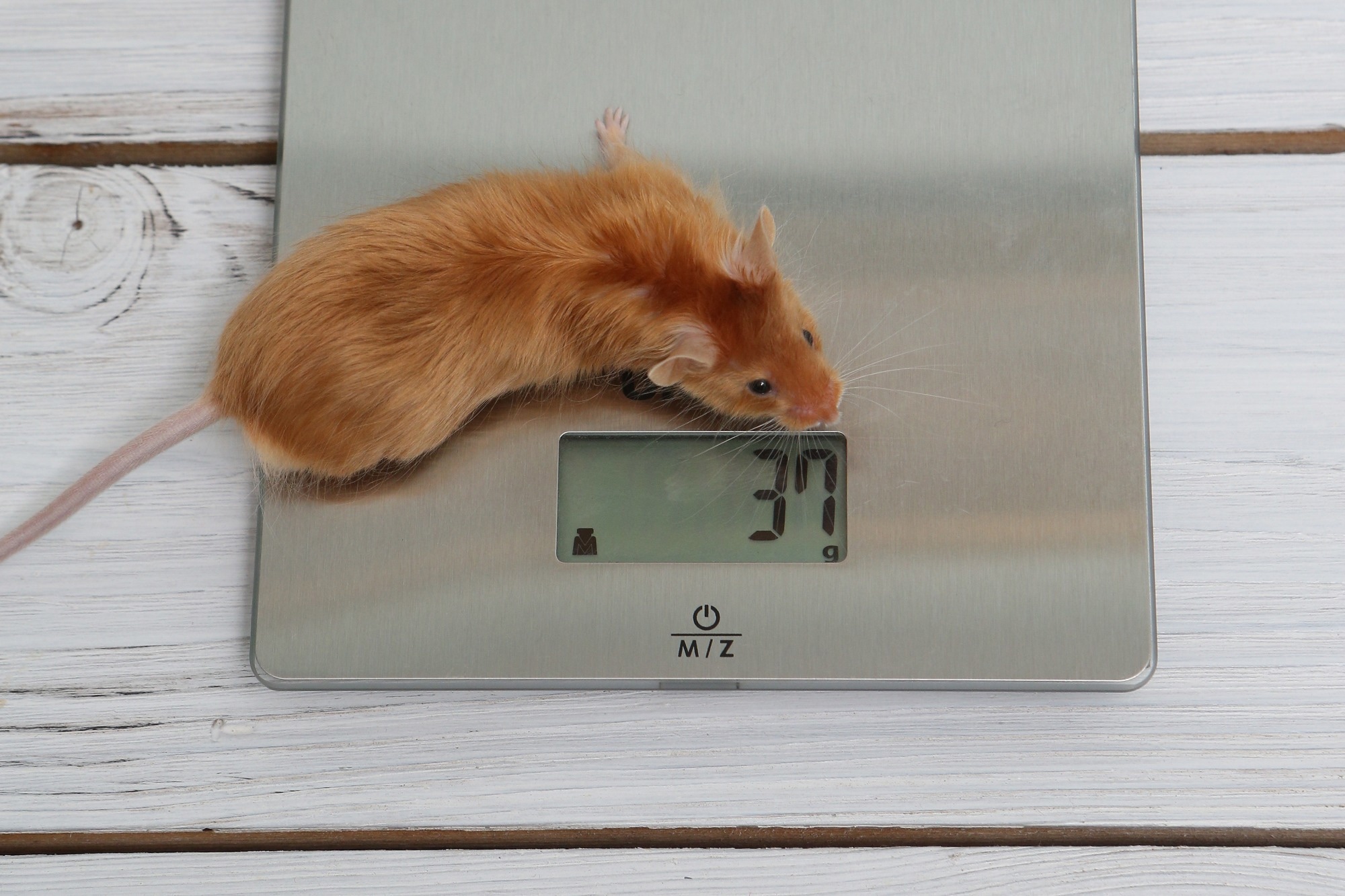In an article published in the journal Patterns, researchers presented a computer vision (CV) model that non-invasively determined the body mass of mice from video data. This method provided continuous, accurate mass tracking with a 5% mean error, enhancing the quality of experiments and ethical standards in animal care. The authors eliminated the need for manual weighing, which could induce stress in mice, thus improving both research outcomes and animal welfare.
 Study: Computer Vision Predicts Mouse Mass with High Precision. Image Credit: Sergey Bezgodov/Shutterstock.com
Study: Computer Vision Predicts Mouse Mass with High Precision. Image Credit: Sergey Bezgodov/Shutterstock.com
Background
Body mass is a key health indicator in both humans and rodents, including mice used in research. Traditional methods for measuring mouse mass involve manual weighing, which induces stress and provides static data, limiting continuous monitoring. Non-invasive techniques, such as those used in farming, have faced challenges due to the flexible and varied postures of mice. Existing methods often require complex setups or are limited in scalability.
This paper addressed these issues by using CV to measure mouse body mass through single-camera video surveillance. This approach overcame previous limitations by providing accurate, continuous mass assessment across genetically diverse mouse strains, without needing direct animal handling or specialized equipment. This method enhanced both research quality and animal welfare by offering a scalable and precise solution for mass monitoring in various environments.
Experimental Procedures
The researchers focused on predicting mouse body mass using video data and CV techniques. Mice were obtained from The Jackson Laboratory and recorded in standard arenas. Videos, with dimensions of 480x480 pixels and recorded at 30 frames per second, were analyzed to extract visual features for mass prediction.
The research utilized existing segmentation neural network code and publicly available tools. The study tested six regression models, including both simple and multiple linear regressions, to predict mouse mass. Data accuracy was evaluated through a 50-fold cross-validation and compared using various statistical metrics.
Segmentation and mass prediction were refined for both single and multi-mouse setups, addressing challenges like varying mouse postures and occlusions. This method enhanced non-invasive, continuous mass monitoring, offering a scalable solution for improving animal welfare and research quality.
Metrics and Model Performance
The researchers aimed to enhance non-invasive mouse mass prediction by leveraging video data from open-field recordings. They collected 2,028 videos of mice from 62 strains, analyzing them to fit ellipses around segmented mouse images and adjusting for posture and genetic variability.
Mice, being highly deformable, exhibited significant fluctuations in segmentation area due to varying behavior. To account for this, the authors explored metrics like eccentricity, aspect ratio, elongation, and speed to correct posture. Among these, eccentricity proved most effective, reducing prediction error and variability.
The approach included per-frame segmentation, converting pixel areas to real-world units, and adjusting for camera and arena differences. The researchers evaluated model performance using metrics such as mean absolute error (MAE), root mean square error (RMSE), and mean absolute percentage error (MAPE). The basic model using raw segmentation areas achieved a MAPE of 8.6%, but incorporating unit-converted areas, eccentricity, and other covariates (sex, age, strain) significantly improved accuracy. The final model, incorporating all these factors, achieved a mean MAPE of 4.84%, demonstrating high accuracy across sexes and diverse strains.
Additionally, the full model successfully tracked individual mice's mass over a 22-day period, showing strong potential for monitoring weight changes due to health conditions. Our results indicate that advanced metrics and comprehensive modeling significantly enhance the precision of visual mass estimation in laboratory mice.
Advancements and Practical Applications
Given the challenges of mice's deformability and limited camera resolution, the researchers developed six CV models incorporating segmentation, ellipse-fit masks, and biological attributes. Their approach, which used explainable machine learning and diverse mouse strains, showed that visual mass prediction could be accurate and practical for experiments. Despite some limitations like spatial resolution and observation intervals, their method met humane intervention standards and could be adapted for various environments and species, offering a viable tool for preclinical studies.
Conclusion
In conclusion, the researchers demonstrated that CV models could accurately predict mouse body mass from video data, offering a non-invasive and continuous monitoring solution with a 5% mean error. By eliminating manual weighing, the method enhanced both research quality and animal welfare by reducing stress and allowing for scalable mass assessment.
The approach used advanced segmentation and regression techniques, adaptable to diverse experimental setups. Despite resolution and posture variability challenges, the model met humane intervention standards and provided a robust tool for preclinical studies, improving accuracy and animal care in research environments.